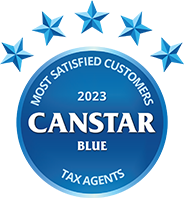NEW UPDATE: JobKeeper package is official! (as per 8th April)
Thursday, 9th April 2020
But now that the JobKeeper payment is official, what does that mean for you? The rules governing eligibility for the payments, published by the Treasurer, should clear up a lot of the questions you might have. We’ve listed some of the basic questions here. Am I an eligible employer? You are an eligible employer if your GST turnover for a turnover test period of at least one month falls short compared to the corresponding period in 2019 by: 15% (for certain charities) 50% (if your aggregated turnover for the current year is likely to exceed $1 billion, or exceeded $1 billion for the previous year) 30% (for all other cases). Am I an eligible employee? You are an eligible employee if you: Are employed by your employer at any time in the fortnight Are at least 16 years of age (on 1 March 2020) Are an Australian resident for social security purposes or a tax resident subclass 444 visa holder Are employed full-time, part-time or, casually (for at least 12 months on a regular and systematic basis on 1 March 2020) Give your employer the required notice. You are not eligible if you receive: Government parental leave pay for a period which overlaps with the fortnight Dad and partner pay in the fortnight Certain workers compensation payments in a period overlapping with the fortnight. What obligations do I have as an employer? As an employer, you must ensure that every nominated employee receives at least $1,500 pre-tax every fortnight. If you pay your employees monthly you will need to adjust your payments to fit with the JobKeeper payment The first JobKeeper fortnight ends on 12 April 2020, and this would be the first payment due date for some employers. The Commissioner has the discretion to treat payment as having been made by 12 April 2020 where reasonable to do so. Does JobKeeper count as taxable income? Yes, the JobKeeper amount is taxable income for the employee and the employer must withhold PAYG income tax Superannuation contributions are not required on the amount by which the JobKeeper exceeds the employee’s actual wages. Note: States and Territories are generally yet to finalise their individual positions on the extent to which JobKeeper is taken into account for payroll tax and workers’ compensation insurance purposes. As an employer, what do I have to do to receive the payment? To receive the JobKeeper Payment, you are required to: Register interest on the ATO website Notify the Commissioner (in the approved form) by 26 April 2020 if you want to participate from the commencement of the scheme, otherwise you must notify before the end of the first fortnight for which you want to participate Obtain a notification from each employee confirming their consent to being included in the application Provide details of eligible employees for each fortnight to the ATO (in the approved form) Notify eligible employees within 7 days of each fortnightly claim for the subsidy Report monthly to the Commissioner by the 7th of each month on your GST turnover for the previous month, and its projected GST turnover for the coming month. As an employer, when will I receive the payment? The JobKeeper payment must be paid by the Commissioner no later than 14 days after the Commissioner has considered the employer to be eligible. For further payments, the JobKeeper payment must be paid by the Commissioner within 14 days of the last payment period ending. These are only just the highlights, and if you have any more questions, we would recommend contacting one of our ITP consultants on live chat, phone or email. We are ready to assist both employers and employees with any issues they have regarding the JobKeeper Payments. Or you can find more information here.

